
How to move forward with LEGO Education SPIKE Prime
This tutorial in an animated demonstration of how a LEGO Education SPIKE Prime moves forward. To download the program check out the courses in which the tutorial is used.
- #1716
- 26 Apr 2021

This tutorial in an animated demonstration of how a LEGO Education SPIKE Prime moves forward. To download the program check out the courses in which the tutorial is used.


This video tutorial focuses on accomplishing M05 Angler Fish, M09 Unexpected Encounter, collecting samples for M14 Sample Collection, 3 Krill for M12 Feed the Whale, and Reef Segments for M03 Coral Reef of the FIRST LEGO League 2024-2025 SUBMERGED Challenge using the Nautiq box robot (a LEGO Education SPIKE Prime robot). The run achieves a perfect 10 out of 10 score across these missions in one continuous sequence.
The robot collects and delivers samples, gathers krill and reef segments, pushes the Unknown Creature into the Cold Seep, and engages mission models with precision. The path is optimized for efficiency, combining multiple scoring actions with minimal wasted movement. You can watch the full explaining tutorial here.


Let's explain the problem of just waiting for the Gyro sensor to detect an angle and think of why the robotics systems work like that.
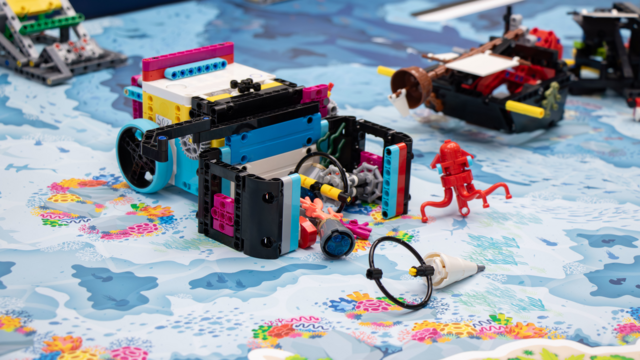

This video tutorial focuses on solving M05, M09, collecting samples for M14, 3 Krill for M12, and Reef Segments for M03 of the FIRST LEGO League 2024-2025 SUBMERGED Challenge using Nautiq box robot (a LEGO Education SPIKE Prime robot).


Sometimes robot builders are so overwhelmed with the process of constructing a robot that they forget two very important parts. The brick should be accessible and the cables should not get in the way. These are referred by us as Brick Accessibility and Cable Management.
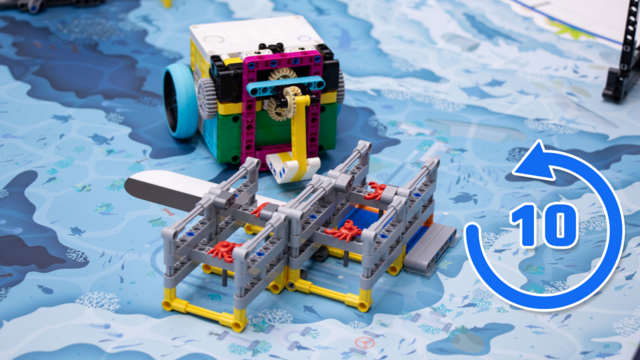

This video tutorial focuses on accomplishing M8 Artificial Habitat of the FIRST LEGO League 2024-2025 SUBMERGED Challenge using the Nautiq box robot (a LEGO Education SPIKE Prime robot). The run uses a simple active pinless attachment mounted at the front of the robot for precise engagement with the mission model.
The goal is a perfect 10 out of 10 runs by positioning all four crabs upright with their yellow bases touching the mat. You can find the full explaining tutorial here.


Pinless attachments are smart and quick and could make a big differences between two robot constructions. In this video we are sharing a nice idea for a pinless attachment placed below the robot.


This video tutorial focuses on accomplishing M8 Artificial Habitat of the FIRST LEGO League 2024-2025 SUBMERGED Challenge using the Nautiq box robot (a LEGO Education SPIKE Prime robot). The run uses a simple active pinless attachment mounted at the front of the robot, designed for precise engagement with the mission model.
The goal is to position all four crabs upright with their yellow bases touching the mat for maximum points, a task requiring careful alignment and controlled movements. While it is possible to complete the mission with fewer crabs upright, this run is programmed for the full score, using dedicated movement commands in a separate run for maximum accuracy. This approach combines a reliable mechanical design with precise navigation to meet the mission’s demanding scoring conditions.


Last part of the series. The final touch of the program makes sure that it works and is following the line with the LEGO Mindstorms EV3 Color Sensor in a smooth and fast way.


This video tutorial demonstrates a 10 out of 10 on M13 Change Shipping Lanes, along with partial completion of M09 Unexpected Encounter and M12 Feed the Whale in the FIRST LEGO League 2024-2025 SUBMERGED Challenge, using the Nautiq box robot (a LEGO Education SPIKE Prime robot).


In this episode we build a reusable attachment for a LEGO Mindstorms EV3 robot that changes gears orientation and direction. It is one of the most useful attachments that you could use to move levers up/down and right/left. Adding the attachment on the robot takes 2-3 seconds and shows a very useful general principle of how to build reusable attachments.
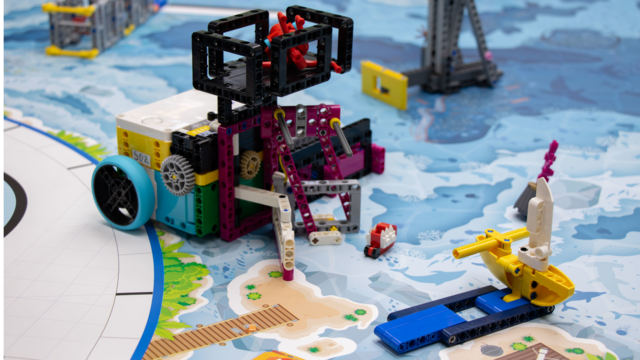

This video tutorial focuses on accomplishing M13 Change Shipping Lanes, and partially M09 Unexpected Encounter and M12 Feed the Whale of the FIRST LEGO League 2024-2025 SUBMERGED Challenge using the Nautiq box robot (a LEGO Education SPIKE Prime robot).
In this run, the robot flips the shipping lane model, collects the small Krill, and retrieves the Unknown Creature from the field by pushing on the mission model. These tasks are executed with precision to ensure that the robot not only scores the primary mission points but also safely returns the collected elements back to base. The sequence is optimized to minimize travel time between missions while maintaining accuracy and control over the robot’s attachments.
We use a pinless, three-in-one design attachment for completing multiple missions in one run. At the front, an angled rubber band mechanism handles M13 Change Shipping Lanes, allowing the robot to launch straight from base without extra positioning.
On one side, a passive curtain mechanism like a cage captures the single Krill for M12 Feed the Whale. On top, a secure basket catches the Unknown Creature from M09 Unexpected Encounter after a push with the robot’s back. The attachment is optimized for quick and reliable mission execution without additional motors.


This video lesson is a revised version of Episode #1. Matt Gipson requested it in a comment. Using the EV3-G software we have developed a very simple program for following a line with two LEGO MINDSTORMS color/light sensors.
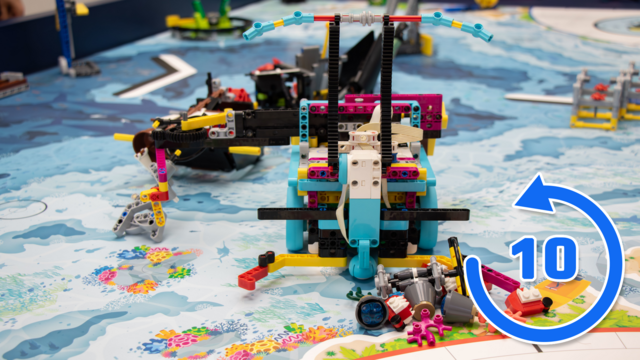

This 10 out of 10 video tutorial focuses on the flawless accomplishment of M05 Angler Fish, M09 Unexpected Encounter, M10 Send over the Submersible, and M11 Sonar Discovery of the FIRST LEGO League 2024-2025 SUBMERGED Challenge using the Nautiq box robot.
The run uses a combination of aligning, front, and back attachments to execute multiple tasks in one run, including a rotation transfer system using a single long axle for M11, early execution of M10 for a strategic edge, and sensor-based alignment for precision. Despite the reduced per-run accuracy due to the mission count, this method ensures that when the run works, it secures an exceptionally high score.


This video discusses the fact the robot requires a few more parts that are available in the LEGO Mindstorms EV3 robotics sets. We have a number of other constructions that require less parts, but for this particular robot construction we have decided to go beyond the standard sets, cheaply buy a few more parts and build a whole box robot with them.


This video tutorial focuses on accomplishing M05 Angler Fish, M09 Unexpected Encounter, M10 Send over the Submersible, and M11 Sonar Discovery of the FIRST LEGO League 2024-2025 SUBMERGED Challenge using the Nautiq box robot (a LEGO Education SPIKE Prime robot). The run uses three attachments in sequence: an aligning attachment at the start to reduce initial inaccuracies, a front attachment for solving M05 and M10 while collecting krill, reef segments, and the water sample, and a back attachment for solving M11, delivering the unknown creature for M09, and collecting plankton and seabed samples.
The front attachment is particularly interesting in this configuration because it integrates two color sensors and one motor directly onto the attachment itself. These sensors are used to align the robot to the black line near M10, while the aligning attachment at the start ensures a precise launch position.
This version of the big run takes on significantly more missions in a single attempt than a standard sequence, which naturally comes at the cost of reduced accuracy. In the current FLL competition format—where only your best score from three attempts is counted—this trade-off can be highly strategic. A run that works perfectly even just once can yield a massive point boost, making this kind of high-reward, lower-consistency approach a potential game-changer for teams willing to take the risk.


In this tutorial we introduce the basic algorithm for following a line with one sensor and review the algorithm for quickly followwing a black line with one sensor, implementing both with the Mindstorms EV3 robotics kit.
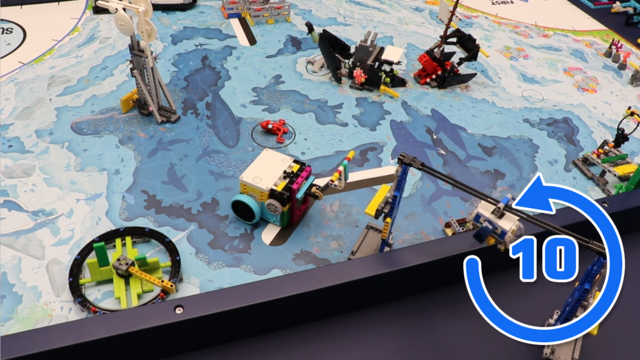

This video tutorial focuses on accomplishing M10 Send Over the Submersible of the FIRST LEGO League 2024-2025 SUBMERGED Challenge using the Nautiq box robot. In this series of test runs, the goal is to achieve 10 out of 10 successful deliveries where the submersible reaches the opposing field, and the robot disengages without touching the mission model at the match’s end.
The run uses a simple pinless attachment with stopping beams for consistent positioning, combined with programming that integrates a parallel timer for perfect match-end execution. This setup gives the robot the highest possible success rate for both mission requirements across repeated trials.


In this episode we look at the way this robot is balanced. A well-balanced robot could handle heavier attachments without losing track of its position on the robotics competition field.
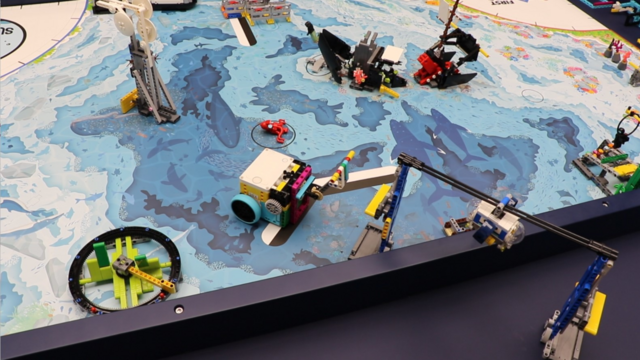

This video tutorial focuses on accomplishing M10 Send Over the Submersible of the FIRST LEGO League 2024-2025 SUBMERGED Challenge using the Nautiq box robot (a LEGO Education SPIKE Prime robot). The run uses a simple pinless attachment that engages with the front gearwheel of the robot to raise the yellow slider. Built-in stopping beams ensure the attachment always starts from the same position for consistent operation.
This minimalistic but reliable design allows the robot to perform the lift with stability and repeatability, making it well-suited for a time-sensitive mission. The attachment’s simplicity also enables quick setup between runs, keeping it competition-ready.

If you think that the quick pinless attachments shown in video 63 are quick enough, see this tutorial and you will find out that the quick pinless attachments could be even quicker. These attachments can work without motors but by using the inertia forces.


This video tutorial focuses on accomplishing M11 Sonar Discovery and M12 Feed the Whale of the FIRST LEGO League 2024-2025 SUBMERGED Challenge using the Nautiq box robot. The goal is to achieve 10 out of 10 successful completions, with the robot reliably rotating the sonar and feeding the whale in every trial.
The run uses a combined two-part attachment where the front section opens the whale’s mouth and drops the krill while the rear section uses a chain and hook mechanism to rotate the sonar. The programming ensures precise timing, correct hook positioning, and a small forward adjustment to avoid snagging, enabling consistent results across all attempts.


The Gyro sensor can be positioned horizontally, vertically or at a random angle. Have you ever wonder what does the gyro detect when it is positioned vertically. This is the subject of this video tutorial for the LEGO Mindstorms EV3 Gyro Sensor.
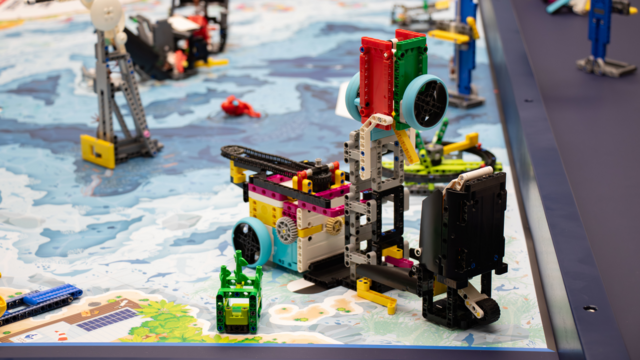

This video tutorial focuses on accomplishing M11 Sonar Discovery and M12 Feed the Whale of the FIRST LEGO League 2024-2025 SUBMERGED Challenge using the Nautiq box robot (a LEGO Education SPIKE Prime robot). The run uses a combined two-part attachment for maximum efficiency. The front section is designed to drop the krill into the Whale for M12, using a stationary beam to open the whale’s mouth and an angled beam to tip the krill container so they fall inside. Wheels are added as counterweights to prevent the container from opening during movement.
The rear section operates the sonar rotation for M11, using a chain-driven mechanism to transfer power from the robot to the mission model. A hooked beam is integrated at the end, allowing it to easily catch the yellow part of the sonar for rotation. This combined design allows the robot to complete both missions in one smooth, coordinated run without swapping attachments.


In part 1 of How to on Gears tutorial I introduced you to the basics of the gear systems. Now we are going to examinate gear systems with more than two gears and take a look at cascade gear systems.


This video tutorial focuses on accomplishing M15 Research Vessel of the FIRST LEGO League 2024-2025 SUBMERGED Challenge using the Nautiq box robot. In this series of test runs, the goal is to achieve 10 out of 10 successful deliveries, with the robot pushing the loaded ship to its destination, releasing it cleanly, and moving to the other launch area without a single failed attempt.
The run uses a pinless attachment with a locking mechanism and friction pins to secure the cargo during movement and allow smooth release upon arrival. The precise programming and stable design ensure consistent performance across the trials.


The third robot has the brick and motors placed vertically. This is quite unusual and difficult, but the construction is very powerful because it saves space.